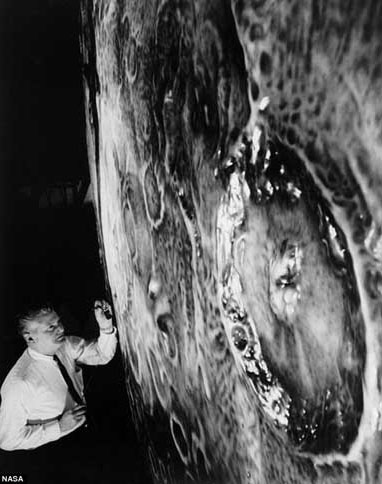The mystery behind Apollo's missions
NASA's ingenious moon simulation system supported the preparation for the Apollo mission series, allowing astronauts to set foot in places people never knew.
How can you prepare to land your spaceship on the surface of "Ms. Hang", which has never welcomed humanity?

LOLA is conceived and designed at
Hampton in 1962 - (Photo: NASA)
One of the answers lies in NASA's Flying Around and Moon Approach (LOLA) system, which cost up to $ 2 million of the agency, according to Space.com.
The high-tech simulation system is designed to correspond to the vision of an Apollo astronaut, as he looks down at the moon's surface just before setting the orbit around Earth's natural satellite.
Designed at Langley Research Center in Hampton, Virginia, LOLA is one of many projects to demonstrate the success of the ambitious Apollo program announced by President JFKennedy in 1961.
Because the moon's gravity is only 1/6 of that on Earth, driving a spacecraft to land on "Ms. Hang" is not the same as any landing mission in the atmosphere of the planet.
Another problem that NASA scientists need to deal with is how to help astronauts deal with glare in an atmospheric environment, and LOLA is also tuned to address this issue.
In theory, LOLA was a great machine, but unfortunately, after the Apollo 11 mission in July 1969, NASA realized that there was no problem approaching or landing a spaceship on the moon, and the program LOLA has ended later.
- NASA has just opened two new missions to learn more about the Sun.
- How much does NASA spend on space exploration missions?
- To reach Mars, need to be out of space longer
- Vivid images of space astronauts
- Disaster in space
- The Apollo 11 astronaut revealed an unpublished photo
- The most mysterious mystery submarine cases in the world
- The famous mystery in history has been solved
- Six outstanding space missions are underway
- With $ 19.5 billion of pumping, many of NASA's missions soon became a reality
- The mystery of the bottomless pit swallowed everything hidden for more than 200 years
- Australia develops robots on dangerous missions
 Van Allen's belt and evidence that the Apollo 11 mission to the Moon was myth
Van Allen's belt and evidence that the Apollo 11 mission to the Moon was myth The levels of civilization in the universe (Kardashev scale)
The levels of civilization in the universe (Kardashev scale) Today Mars, the sun and the Earth are aligned
Today Mars, the sun and the Earth are aligned The Amazon owner announced a secret plan to build a space base for thousands of people
The Amazon owner announced a secret plan to build a space base for thousands of people